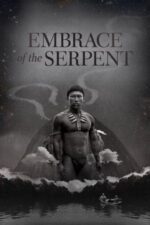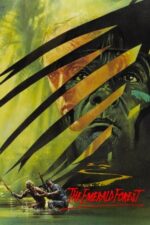Beyond Paradise: Exploring Humanity’s Fascination with the Amazon Rainforest on Film
Okay, let’s talk about something that consistently captivates filmmakers and audiences alike: the Amazon rainforest. It's more than just a location; it represents mystery, danger, primal power, and a connection to something ancient and untamed. And cinema has been wrestling with its allure for decades.
What is it about this place that sparks our imaginations so intensely? I think part of it is the sheer otherness of it. We’re talking about an ecosystem teeming with life, largely unexplored, where the rules feel different than anything we experience in our urban lives. It's a blank canvas for projection – a space to explore our deepest fears and desires, our relationship with nature, and even our own humanity.
Take River of Desire, for example. While ostensibly a story about tangled romantic relationships, the lush Amazonian setting isn’t just window dressing. The dense foliage, the humidity, the feeling of being constantly watched – it all contributes to an atmosphere of simmering tension and repressed desires. It mirrors the emotional turmoil of the characters; their passions are as wild and untamed as the jungle itself. It's a beautiful film, but that setting really elevates it.
Then you have something completely different like Perlimps. Here, the Amazon isn’t a realistic depiction, but a fantastical backdrop for an adventure story. It taps into that primal sense of wonder we associate with unexplored territories – imagine Indiana Jones, but with even more vibrant colors and bizarre creatures! It's pure escapism, fueled by our inherent fascination with the unknown.
The films don’t always portray the Amazon in a positive light, though. Revenge of the Creature is a prime example. It plays on that fear of the wild, the idea that nature can be unpredictable and even hostile. It's a classic monster movie trope – taking something from its natural habitat and unleashing it upon an unsuspecting world. And honestly, there’s a cautionary tale in there about respecting boundaries and understanding the consequences of our actions. It reminds me a little bit of Jurassic Park - messing with nature always has a price!
Films like The Lost Children and The Last Shaman offer a more reverent perspective, highlighting the deep connection between indigenous communities and the rainforest. They showcase resilience, ancestral knowledge, and a profound respect for the environment – something we desperately need to remember in today’s world. Seeing those children navigate the jungle with such innate understanding… it's genuinely inspiring.
Ultimately, films set in the Amazon aren't just about adventure or monsters; they're reflections of our own anxieties and aspirations. They force us to confront our place within a larger ecosystem and consider what we stand to lose if we fail to protect this vital part of our planet. So next time you’re looking for something visually stunning, emotionally resonant, and thought-provoking, dive into the cinematic world of the Amazon – you might just discover something about yourself along the way.






































